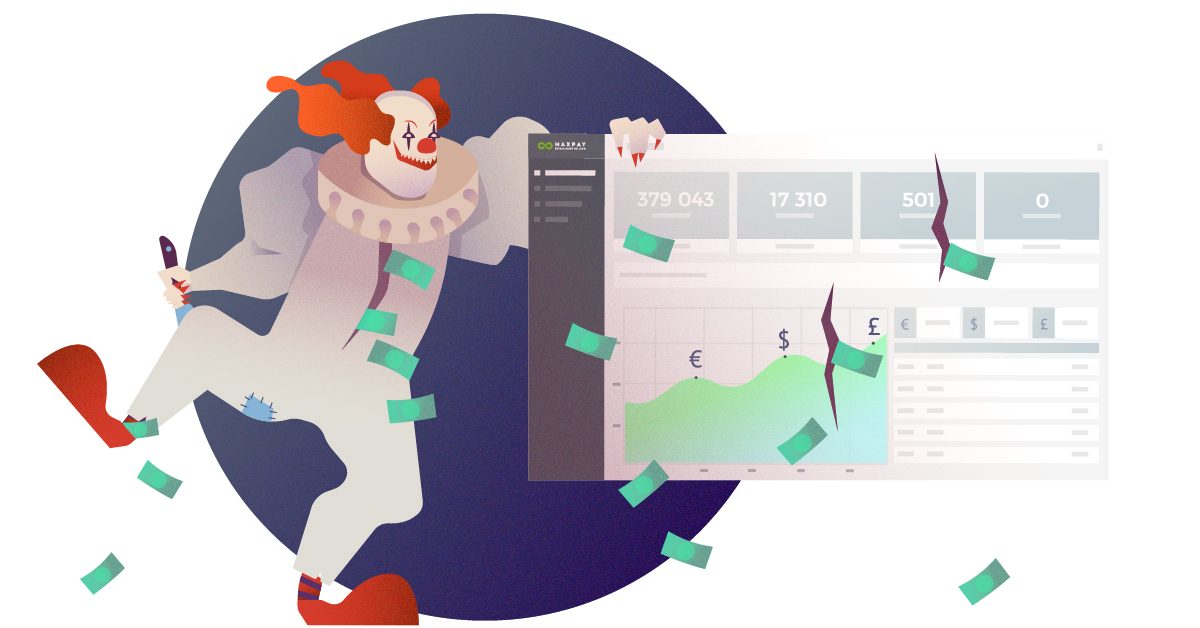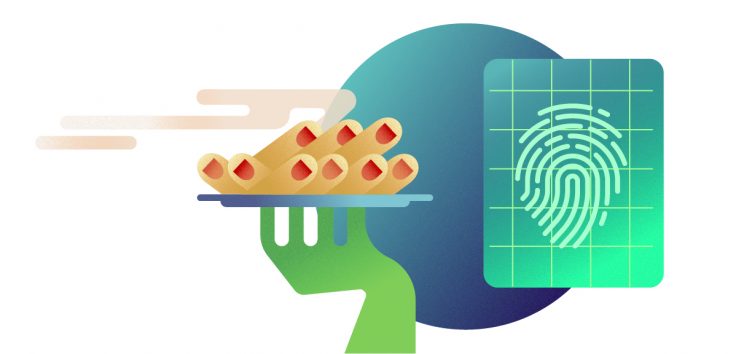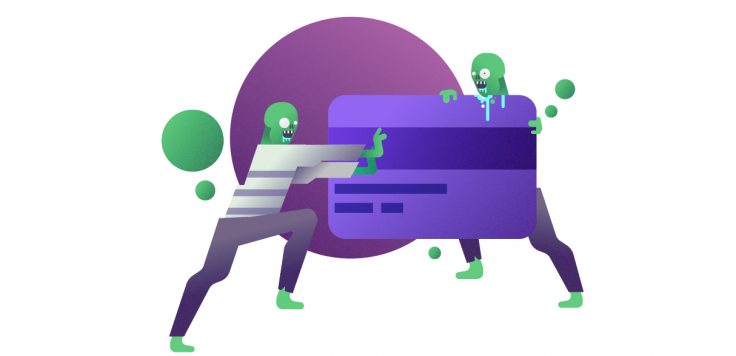5 Most Frightening Myths About Payments

For many people nothing is as scary as checking their bank statement and seeing something unexpected. Yet, hidden fees and credit card balance are not the only skeletons that might be hiding in your financial closet. If you still believe the myths about your ‘friends, co-worker’ who had their kidney stolen in Mexico, or that Walt Disney was cryogenically frozen, then you might want to take a look at these 5 scary myths about payment processing.
Myth #1
The issuing bank will take responsibility for fraudulent payments on your merchant account.
Fact: The only thing scarier than a clown with a knife is a clown with an envelope full of chargebacks. After October 1st, 2015, the liability for in-store counterfeit fraud moved from the issuing bank to the front lines. Now if either the cardholder or the merchant has not upgraded to the new EMV chip technology, they are on the hook for the vanished money.
“The liability shift protects the entity who offers the greater level of security by holding the other entity with less secure systems responsible for fraud,” said Carolyn Balfany, safety and security expert at Mastercard. “For example, if fraud occurs when a chip card is inserted into a terminal that hasn’t been upgraded, the merchant is responsible for the fraud.”
Prior to the EMV liability shift, credit card issuers had taken on the primary responsibility for covering fraud on consumer accounts – meaning they would reimburse the cardholder, not the merchant. After that date, the liability for in-store fraud shifted to the party who had not adopted the new chip technology.
In most cases, the insuring bank will still be reimbursing cardholders to speed up the process, but they will try to recover those funds from the merchant if they were not prepared to accept EMV payment technology.
Whatever way you look at it, EMV liability shift is no laughing matter.
 Myth #2
Myth #2
Biometric security is more secure than passwords.
Fact: Biometric security is not as foolproof as we hoped it would be.
Even though Halloween is the only time it is acceptable to offer your guests severed thumbs as finger food. We have all see movies where a savvy spy uses the hand of a knocked out security guard to get into the top-secret room. While most of us are not worried about someone severing our thumbs to order a pizza on our credit card, there are much broader implications to using fingerprints and retinal scans.
The primary problem with biometrics is also their biggest advantage, they are almost impossible to change. This is coupled with the fact that it is easy to send and receive digitized images of our fingerprints or eyes. When Target stores had their infamous data breach in 2013, people scrambled to cancel credit cards and get new ones. If they had used fingerprints for verification, they would have been on file as well. This would have put everyone at risk for the rest of their lives, after a single breach at one location.
Having a security measure that is easy to replicate and impossible to change is the perfect recipe for a disaster movie.
Myth #3
Canceling a stolen credit card ensures that it can not be used fraudulently.
Fact: Purchases can be made through contactless payments, months after the card has been canceled.
Just like putting up a “do not disturb” sign doesn’t guarantee that no trick-or-treaters will come, canceling a bank card doesn’t guarantee that no one will use it again. Some banks still process data and automatically debit accounts without checking whether it has been canceled. This happens when a payment is processed “offline” – usually with contactless payments. This means that the several payments are stored in a batch and processed to the bank at a later point. In smaller stores, this can be several days later.
Consumers can watch their accounts to check if there are any suspicious payments being made. There is no defense for merchants who simply have to accept the risk when they start processing offline payments.

Myth #4
Payment fraud only happens with retail clients
Fact: Payment fraud with B2B payments is increasing to zombie apocalypse levels. Well, it is increasing, anyway. Most often, the fraudster compromises a legitimate business email, either through social engineering or a computer virus. Once they can impersonate an employee, they convince a victim at another business to send the payment for a routine bill or service to a new account.
Zombie fraudsters are smart enough to use the same method of payment as the company in question usually uses, such as a wire transfer or a paper check, to keep suspicion down. Either business may not notice the problem until months later when they receive an actual late-payment notice for their bill, or the entire office becomes zombies.
Myth #5
Your customers want more payment options on your checkout page.
Fact: Most consumers want to use their preferred payment method – either a credit/debit card or Paypal.
Greedy kids in costumes are not concerned with variety. They don’t want sushi and fruit bars. They are in it for the cold hard candy. Nothing sends the young ones running in terror like threatening to drop an apple into their treat bag.
Likewise, your customers generally want to use their two most common payment methods – credit/debit cards or Paypal. While offering a couple other options can increase conversions, throwing every option available on the main payments page can easily scare cardholders away.
Simple support for one-click payments, subscription payments, and cross-sales are some of the most important investments you can make on your site.
Be careful not to fall into the financial traps in these myths. Scaring people at Halloween is fun, but scaring your customers can cost you valuable business.